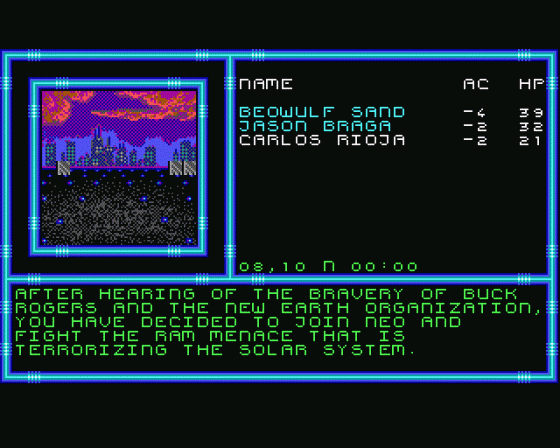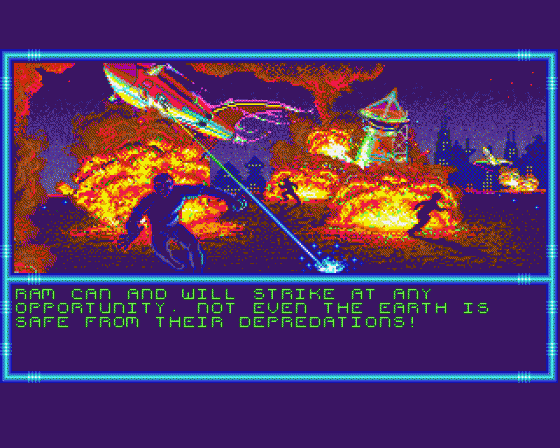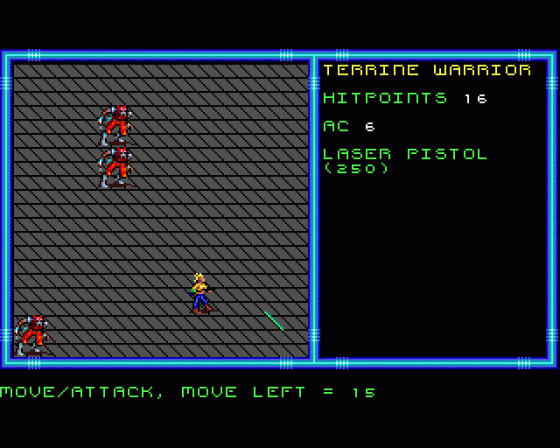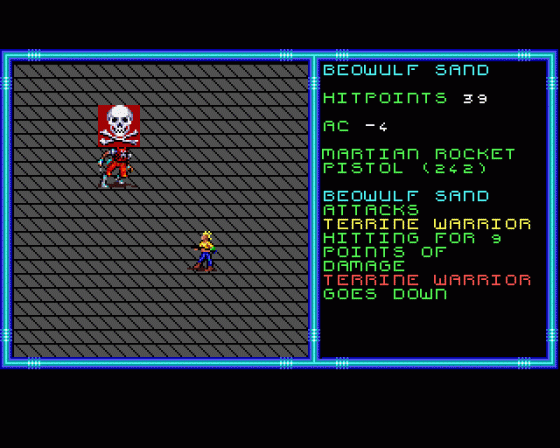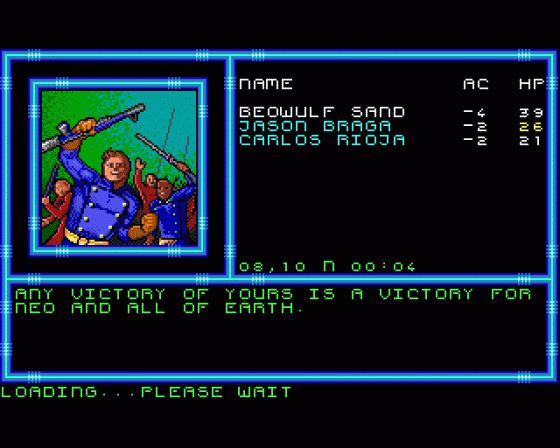Buck Rogers: Countdown To Doomsday
The RAM (Russo-American Mercantile) organization is based on Mars. They want to control the Solar System - a natural enough ambition I suppose. They rule Earth with an iron hand, thus NEO (New Earth Organization) has been formed to counter the tyranny. After Buck Rogers was found and revived from his frozen snooze he joined NEO and helped to remove RAM troops from Earth. However, fear of RAM is still high as they could strike any at a time. You join the NEO, one of many new recruits. Buck's task is to form a team, get the hell out into space and put the stellar wind up the dreaded RAM.
Buck Rogers: Countdown To Doomsday uses an uprated AD&D system, although there are meny similarities. The swords have been replaced by laser guns, the towns and villages by planets and space stations. You still control a group of six, the menu interface is structured in the same way, even the 'meanwhile' screens appear to have the same artistic 'feel' to them. However, there are many improvements. The complex skill system being the most important.
Character attributes contain many of the usual categories: dexterity, strength and so on. However, there is one surprise. 'Tech' measures a character's technical know-how. Experience points measure how much each team member has 'learned' by winning battles, finding money and completing parts of the adventure. Increasing levels via high experience advances a character's career.
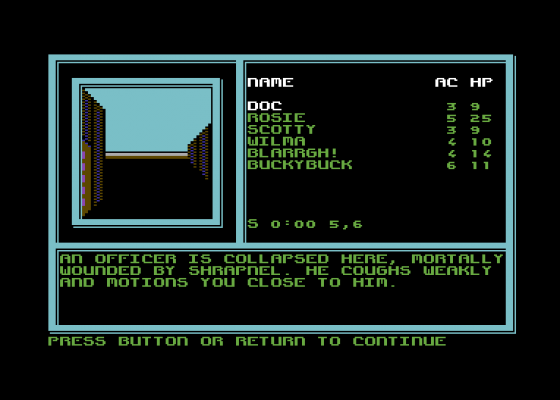
Character classes, as in the fantasy genre, may only have certain careers. The available careers are interesting and varied. So, for example, Tinkers (a race bioengineered to work in cramped spaces - clever with tools, etc) can only be engineers and medics. However, it is the skill system that provides the core to the game and the qualification for each career, via minimum skill values. Rogues can, for example, bypass security, climb pretty well, convince other characters with a spot of fast-talking, hide in the shadows, move silently, notice things, open locks and pick pockets. General skills are also included. They are listed as 'extra curricular' in the manual. During character creation and level increases you are able to allocate points to any skill you have. Skills have a direct influence in the game. Leadership skills may attract NPCs inot the party during combat sequences, for example.
Many of the menu options are similar in their effects to the AD&D menu system, with modifications such as a bar/restaurant instead of the tavern. There are novel options such as the library to find info (an appropriate skill is required to achieve success). You can re-supply and repair your spaceship. Other notables are jury-rig (used when equipment is damaged), boost-engines (attempting to squeeze extra speed out of the engines) and sensor (to probe enemy ships).
Combat uses the usual raised-side-view - ideal for tactical play - and is divided into ten 'segments'. Each segment includes a detailed array of variables such as each character's initiative number (which determines when that character acts in combat), the type and performance of armour each character wears (dexterity also helps in avoiding injury), THACO (the ability to hit an opponent in melee or ranged fire), damage (resulting from the weapon type used and the strength - the greater they are, the more hit points removed from the opponent), saving throws (recovers from poison etc), leadership skill check, battle tactics (this skill enables the team to work better as a group), performance in zero-g manoeuvring and so on. Terrain can be used during tactical play which aids the tactical realism. Combat in space is also available and includes boarding and salvage as options.
As the RPG genre matures, we are slowly seeing it separate into different sub-groups. These should not be directly compared to each other as they all have different goals. Some RPGs are pure hack'n slash (Bard's Tale) while other rely on interaction to succeed (the later Ultimas). Buck Rogers depends on tactical combat to win the game.
As it is the primary feature, combat is excellent and will be enjoyed by tacticians everywhere. In addition, due to the large amount of detail provided for each character (both in normal play and during combat), the game quickly becomes absorbing and addictive. Your characters appear more as 'individuals' rather than just an assortment of a few re-rolled stats such as charisma and strength. There is no doubt therefore, that Buck Rogers sits firmly as the king of the 'Tactical' RPG castle.


 1st January 1991
1st January 1991




